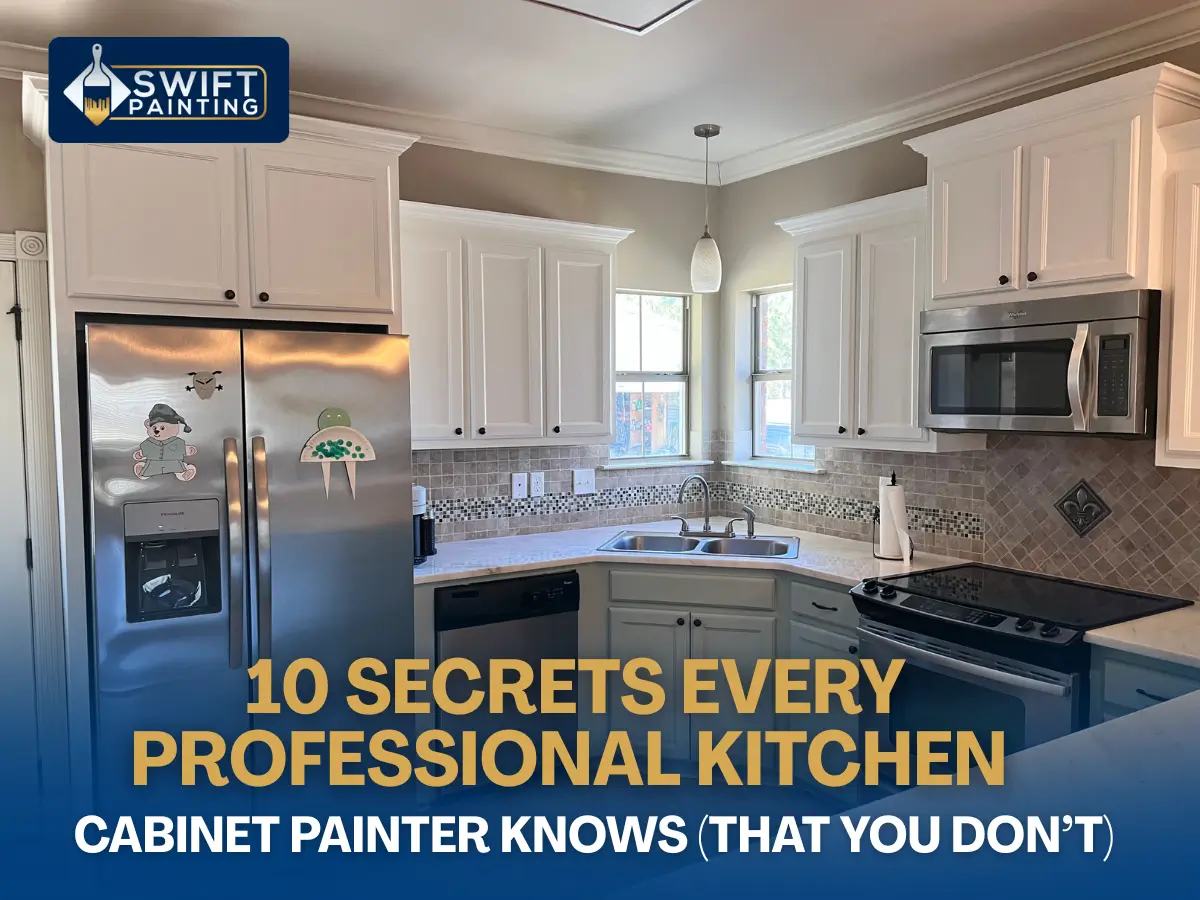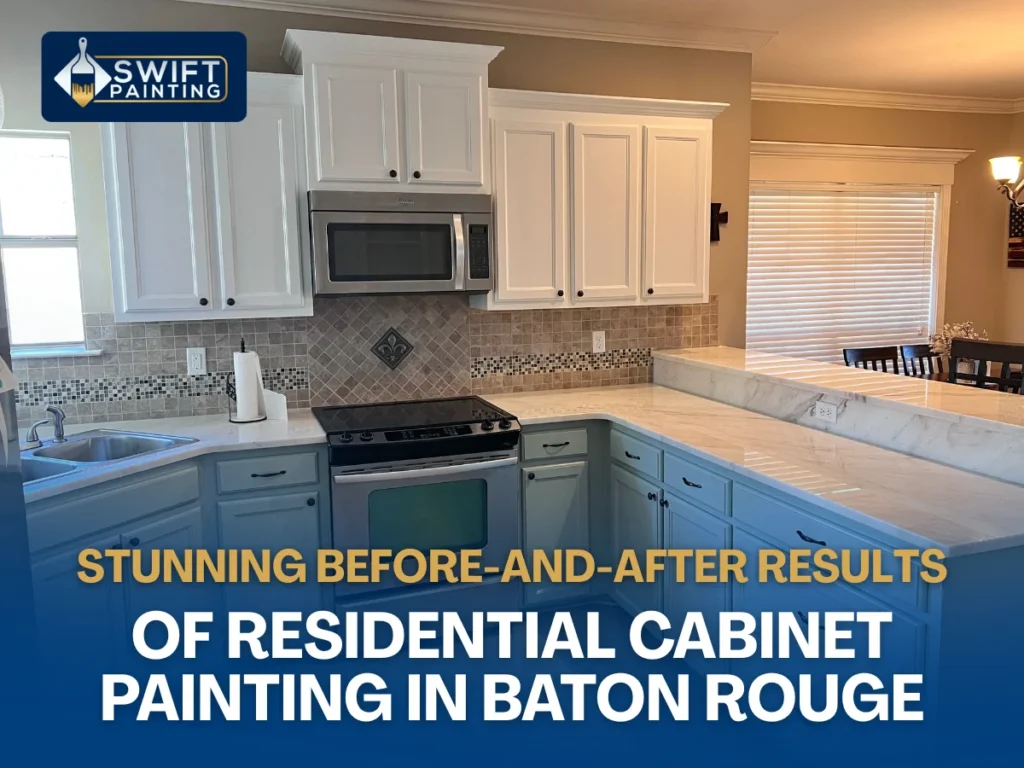Picture this: you walk into a kitchen that feels like it leapt off a magazine cover. Cabinets shine, colors pop, and everything looks new. Then reality hits—you still have the same old, tired cabinets at home. So what’s the difference? It often comes down to what a kitchen cabinet painter knows that you don’t.
Painting cabinets isn’t just about slapping on a coat of paint. It’s chemistry, patience, and a little bit of artistry. Most homeowners try it once and regret it halfway through. The pros, though? They make it look effortless. Let’s talk about the little secrets they swear by—the things that separate a flawless finish from a DIY disaster.
1. Prep Work Is 80% of the Job
Most homeowners underestimate prep work. A pro spends hours removing grease, filling dents, and deglossing surfaces. They’ll often use a degreaser first, then go back with a tack cloth to make sure no dust lingers. A professional kitchen cabinet painter knows even tiny specks under the paint will show later like pimples on smooth skin. They also label doors and drawers so everything fits perfectly when reinstalled—no guessing games.
2. The Right Primer Changes Everything

Primer isn’t just white paint. It’s the foundation that makes the color stay true. Oil-based primers seal wood grains, while bonding primers stick to slick laminate. A skilled kitchen cabinet painter knows which one works for oak’s heavy grain versus laminate’s glassy surface. They’ll even tint the primer to match the paint color, reducing the number of top coats needed. That’s how pros save time without sacrificing quality.
3. Sanding Isn’t Optional
Sanding does more than smooth surfaces—it creates “tooth” for the paint to grip. Skipping it leaves paint sitting on the surface, ready to peel. A pro sands between every coat, starting with 120 grit and working up to 220. Some even wet-sand for extra smoothness. The result? Cabinets that feel like factory finishes, not chalky or streaky. Pros treat sanding like a reset button after each layer.
4. Lighting Makes or Breaks the Job
Cabinets reflect light differently than walls. A kitchen cabinet painter uses portable work lights and even moves them around during the process. This way, they can catch imperfections before they dry. Natural light from a window won’t reveal what LED under-cabinet lights will show at night. A pro checks their work in multiple lighting conditions to guarantee the finish looks flawless at every hour of the day.
5. Hardware Removal Isn’t Just for Show
Painters who leave handles and hinges on are cutting corners. Professionals know paint will chip faster around hardware if it’s not removed. They bag and label every screw and piece, often photographing the cabinet layout for reference. This keeps installation seamless. Plus, with the hardware gone, painters can coat the full surface edge-to-edge, making your cabinets look like they were born with that finish, not painted as an afterthought.
6. The Secret Weapon: Sprayers
Sprayers are game changers, but they’re not foolproof. A kitchen cabinet painter adjusts nozzle pressure, spray angle, and distance depending on the surface. They also back-brush or back-roll to ensure coverage in corners. Sprayers lay down ultra-thin coats, which dry harder and smoother than thick brush layers. It’s not just equipment—it’s technique. That’s why pros can finish a full kitchen in days, while DIYers struggle for weeks.
7. Paint Choice Isn’t About Color Alone

Pros know sheen is just as important as shade. Satin hides fingerprints, semi-gloss resists grease, and matte, while trendy, often shows wear quickly. A kitchen cabinet painter chooses paints formulated for cabinets—stronger, harder finishes that withstand scrubbing and daily abuse. They’ll often test small swatches and check how the finish reacts to cleaning sprays. Choosing the wrong product could leave you with cabinets that look good for six months, then start to chip.
8. Drying Time Isn’t a Suggestion
Patience separates pros from DIYers. A cabinet painter won’t rush drying with heaters or fans, which can trap bubbles or cause uneven curing. Instead, they follow manufacturer guidelines—sometimes waiting 16 hours before recoating. They also know that paint “cures” fully over weeks, not days. During that time, they advise homeowners to treat cabinets gently. That’s why professional jobs stay flawless longer—they respect the process.
9. Color Testing Saves Headaches
A paint swatch on paper isn’t reality. Professionals always apply test panels or sample doors. They know how undertones behave—how that “clean white” might look yellow under warm bulbs or how grays turn blue in natural light. They’ll even move samples around your kitchen at different times of day. A kitchen cabinet painter understands lighting, countertops, and backsplash colors all affect how paint looks. Testing avoids repaint disasters later.
10. Cleanup Is Half the Battle
The last step isn’t painting—it’s restoring your kitchen. Pros vacuum sanding dust with HEPA filters, wipe down surfaces, and reattach hardware carefully. They’ll even buff out small imperfections before leaving. A sloppy painter leaves streaks, drips, or dust specks sealed into the finish. A professional leaves your space looking showroom-ready, not like a workshop. And that last bit of effort is what makes hiring a kitchen cabinet painter worth every penny.
Why Hiring a Kitchen Cabinet Painter Beats DIY

Let’s be real—you could do it yourself. But will you? After removing hardware, sanding for hours, cleaning, priming, painting, sanding again, sealing, and reassembling… most homeowners wish they’d called a pro.
I once had a neighbor who spent three weekends on her cabinets. By the end, she admitted she’d saved maybe $300 but lost her patience, her Saturdays, and her back. Meanwhile, her cabinets looked streaky compared to the ones a local painter did down the street. Sometimes paying for expertise isn’t a splurge—it’s sanity.
What You Don’t See: The Human Side of the Job
A good kitchen cabinet painter isn’t just a worker with tools. They’ve probably painted hundreds of kitchens, listened to homeowners panic over paint swatches, and learned tricks to keep dust from covering your countertops. They’re part craftsman, part therapist, part magician.
Think about it—your cabinets set the tone for your entire kitchen. Hiring a painter isn’t about paint. It’s about creating a space where family dinners feel warmer, holidays feel brighter, and mornings don’t feel so dull.
FAQs
1. How much does it cost to hire a kitchen cabinet painter?
Costs vary depending on kitchen size and materials, but most homeowners pay less than a full cabinet replacement.
2. How long does a professional paint job last?
With proper prep and quality products, painted cabinets can look great for 8–10 years.
3. Can I stay home while cabinets are being painted?
Yes. Most painters work in stages to reduce disruption, but expect some dust and drying time.
4. Is painting better than replacing cabinets?
If cabinets are structurally sound, painting is more affordable and gives them a brand-new look without demolition.
5. Why should I hire a kitchen cabinet painter instead of DIY?
Pros bring experience, tools, and speed. They deliver a smoother finish and longer-lasting results than most DIY projects.
Final Thought
At the end of the day, a professional kitchen cabinet painter knows secrets you can’t pick up from a quick guide. It’s the prep, patience, and detail that turn plain wood into kitchen art. If your cabinets have seen better days, maybe it’s time to call in the pros. You’ll save yourself frustration—and maybe even fall in love with your kitchen again.




